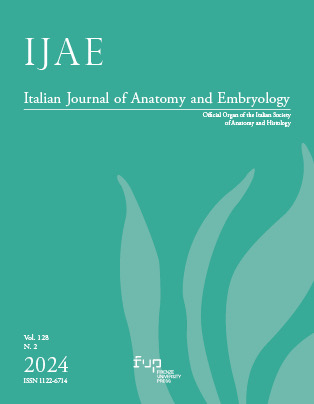Chronic mastitis or breast cancer in The Charity by Francesco Salviati? An educational discussion
Published 2024-12-31
Keywords
- Art and Medicine,
- breast cancer,
- chronic mastitis,
- human anatomy,
- paleopathology
How to Cite
Copyright (c) 2024 Ferdinando Paternostro, Donatella Lippi, Elisa Zucchini, Jacopo Nori, Francesco Galassi, Andreas G. Nerlich, Raffaella Bianucci

This work is licensed under a Creative Commons Attribution 4.0 International License.
Abstract
In the present communication, the painting La Carità (The Charity) by Francesco de Rossi, also known as Salviati (1510-1563), is examined from a multidisciplinary perspective, combining the following disciplines: human anatomy, palaeopathology and history of art. In the impossibility to establish a final diagnosis due to the artistic nature of the artwork, the anatomical alterations found on the iconographic representation are discussed in light of two alternative hypotheses, namely chronic mastitis or breast cancer. Once more the intersection between medicine and art can be found to be of excellent use both for increasing the ancient record of diseases and in an educational effort to train the eye of future physicians.

